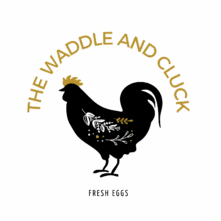Livestock production provides an important source of protein for human diets worldwide, but it also has significant environmental impacts. Using sustainable practices can help the livestock industry reduce its footprint while still providing nutritious meat, dairy, and other products. This article explores various sustainable livestock management practices and how they benefit the environment.
Rotation Grazing and Managed Pastures
Rotation grazing involves moving livestock to fresh pasture areas on a regular schedule. The animals graze intensely on one section, allowing previous sections to regrow. This distributes their waste evenly as fertilizer and prevents overgrazing.
Managed pastures control what vegetation the animals have access to. Mixing grass species, for example, provides more balanced nutrition. Fertilizer and irrigation can also improve production. Such pasture management techniques reduce topsoil erosion and biodiversity loss while supporting higher animal densities per acre.

Wildlife Cohabitation
By protecting wild plants and animals within grazing lands, sustainable ranches can shelter biodiversity and benefit livestock at the same time. Habitat corridors, nesting areas, and water sources – when designed properly – allow native species to thrive without interfering with farm operations. Some cattle even show better weight gain when birds consume larvae from their backs.
Further opportunities exist for financial incentives from wildlife conservation programs when farmers implement cohabitation measures. The related hunting, fishing, and wildlife viewing also produce additional ranch income streams.
Manure Management
The large amounts of manure produced by livestock farms contain valuable nutrients but also pose contamination risks when managed poorly. Composting, digestion systems, solid separation techniques, and constructed wetlands allow farmers to process waste sustainably. The resulting organic fertilizer supplies plant nutrition without chemical inputs.
Manure management prevents pollution, such as eutrophication, in nearby water bodies. It also reduces greenhouse gases like methane that the waste would emit otherwise. Plus, technologies like manure biodigesters generate renewable energy from the breakdown of organic matter.
Efficient Water Usage
Modern irrigation, water recycling, conservation tillage, and drought-resistant plants help livestock facilities use water wisely. Drip irrigation, for example, delivers precise amounts to each plant’s roots. Lagoon storage, tailwater recovery pits, and equipment upgrades further optimize usage. Rotational grazing and managed pastures again play a role by enhancing moisture retention. Such innovations curb freshwater withdrawals – especially in drought-prone regions – saving money for the farm too. Efficient water usage also maintains the quality of nearby surface and groundwater.
Soil Health Practices
Healthy soil equals healthy grass growth to feed grazing livestock. Several regenerative practices enhance soils. Along with rotating animals across paddocks described earlier, integrating crop cultivation on farms supplies nutrient diversity through cover crops and crop residue. Compost, manure fertilizer, and reduced chemical inputs build organic matter.
Conservation tillage techniques like no-till drilling help prevent erosion and runoff. With soil health as a priority, pastures absorb more rainfall and retain more carbon from the atmosphere as well. The resulting rich soil, thick turf stand, and high earthworm counts let livestock prosper in the long run.

Heritage Breeds
Many modern livestock breeds achieve fast growth and high yields with grain-based diets under confined settings. Heritage breeds, in contrast, possess traits that allow them to thrive on grass with minimal human input.
As the market for heritage breed meat and dairy grows, these classic animals make sustainable grazing operations more feasible. Hardy breeds like English longhorn cattle and Gulf Coast sheep better tolerate diseases, parasites, heat, and other stresses from low-input pasture life.
Supporting genetic diversity counters risks, too, so heritage breeds serve as “insurance” within the overall food system.
Silvopasture Integration
The silvopasture concept combines trees, forage plants, and livestock together in a mutually beneficial way. Specific trees and grazing animals are managed as one integrated unit with pasture vegetation filling space between timber stands. The overstory tree canopy provides shelter and shade for more comfortable animals during weather extremes. It also drops leaf litter and pruned branches that decompose to fertilize the pasture plants below. Livestock grazing, in turn, prevents shrubs and brush from crowding out the trees’ regeneration.
By linking sustainable forestry with sustainable animal agriculture, superior outcomes for production and the environment result. The plant diversity enhances nutrition, soil protection, wildlife habitat, and income production from the land too.
Better Animal Welfare
Stress from crowded conditions, climate discomfort, diet changes, transport, disease, and injury plague animals under intensive management. Yet research consistently shows that better basic welfare equals better farm efficiency and product quality. Pasture access, space allotments per animal, clean bedding, gentle handling, and managed social groups are minimum standards for sustainable systems.
Further enrichment comes from brush and toys for interest and natural behaviors. Plus, heritage breeds, as discussed earlier, withstand outdoor farm life better inherently. The improved animal welfare translates into less mortality, fewer antibiotics and drugs, and lower costs over the production period. This then satisfies consumers seeking ethically raised meat, dairy, eggs and other items.
Sustainable livestock management requires some upfront investments but pays off through more efficient land usage, resource conservation, product quality, and animal welfare. Grazing method innovations, biodiversity integration, breed selection, waste recycling, and holistic planning allow farmers to produce meat, dairy, leather goods, and other items responsibly. With consumer demand and environmental priorities shifting, sustainable ranching, dairy farming and other practices present a model for the livestock industry’s future.








